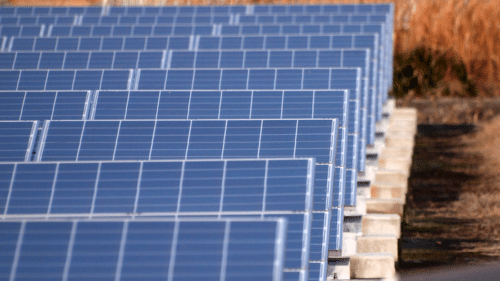The world is moving toward a sustainable energy economy to address the present climate and energy challenges. In this arena, concentrated solar power (CSP) facilities are becoming a prominent role.

CSP plants use lenses and mirrors strewn across a large area to focus sunlight onto solar panels’ receivers, which are subsequently converted into electricity using steam engines or turbines. To maintain high-power conversion efficiency, steam engines must be cooled on a regular basis.
The waste heat generated by steam engines is usually dissipated using the water-intensive wet cooling method. However, because such systems might lose a lot of water due to evaporation, they require a steady supply of water. Because most CSP facilities are built in hot, arid places with limited water resources, this creates a severe concern.
A team of researchers lead by Professor Ronggui Yang from Huazhong University of Science and Technology in China discovered a way to make the cooling process less intense. They devised a cooling system that combined radiative cooling with cold storage and, when used in conjunction with wet cooling, significantly reduced annual water consumption.
When asked about the motivation behind their study, Professor Yang says, “Harsh environments, along with growing water demands in other sectors such as agriculture, industry, and domestic uses, severely competes with power plants for water resources. As a result, we wanted to develop a technique that would make wet cooling of power plants less water-intensive and still maintain the desired thermal efficiency.”
The team’s auxiliary cooling system incorporated the benefits of both dry and wet cooling. Radiative cooling with cold storage is a dry cooling method that uses coolers built of highly sun reflecting materials that may dissipate heat at certain infrared wavelengths into deep space with no absorption in the environment.
The proposed method is an effective way to maintain the thermal efficiency of wet-cooled CSP reactors while consuming less water. This research could be useful in the development of enhanced round-the-clock cooling systems for CSP facilities. “The global water consumption by the power generation sector is expected to double within the next four decades. Our supplemental cooling system design can help tackle the increasing water demand for power plants located in water-stressed regions amid deserts and arid regions,” concludes Professor Yang.







